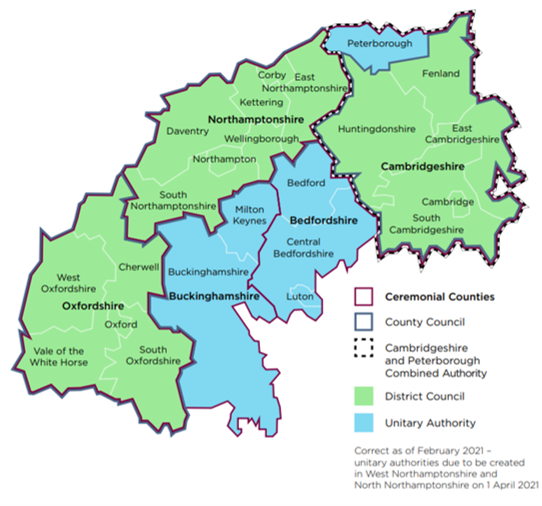Spatial Interests

By Vince Wall
With several exciting new spatial prospects being promoted by various industry leaders, will the 2020s see a return to a more spatial approach towards planning?
Back in 2010, wishing to shake things up, Communities and Local Government Secretary Eric Pickles MP put plans in motion to dismantle “regional bureaucracy”. This would be achieved, in part, by abolishing what he saw as the “complex regime of regional spatial strategies, which wrested powers on transport, housing and planning powers away from local Councils”. Spatial Planning had previously fulfilled the role of regional planning in England, linking the gap between a national approach to land management set out by central Government and a more local approach to planning set out by District and Borough Councils. Aside from the cost of these spatial strategies, the coalition Government also felt them to be undemocratic.
Now, ten years on, and it would seem spatial planning is back in vogue. Perhaps the most dazzling and committed of these spatial prospects is the Oxford to Cambridge Arc, which stretches from Oxfordshire, through Buckinghamshire, Northamptonshire and Bedfordshire, into Cambridge. On 18February 2021, the Ministry of Housing, Communities and Local Government published a document that set out the Government’s plan for developing a long-term spatial framework for the Oxford-Cambridge Arc, launching the project. The arc will work towards developing a number of new settlements within the region. The document sets out issues and opportunities for the region (poor affordability, poor connectivity, educational and economic power) and how these can be approached through a coordination of planning functions across the region. The reason for the spatial approach is discussed on the following terms:
“The councils cannot realise the opportunities of the region on their own because of the level of coordination needed across the area, and because they do not have all the levers needed to develop a genuinely integrated plan. Government needs to play a supporting role to bring together a strategic approach at the Arc level to support better planning and ultimately better outcomes for the economy, environment and communities.”
The document sets out an indicative timeline for developing the Spatial Framework, targeting Autumn 2022 for the publishing of a Draft Spatial Framework which will then be put out to public consultation. Therefore, it will be a while before the scope and force of the Arc become clear.
Across Offa’s Dyke in Wales, the Welsh Government recently put forward its 20-year development vision setting out the direction for development in Wales to 2040. The “Future Wales” document is a self-proclaimed “spatial plan”, setting out a direction for where the Welsh government should be investing in infrastructure and development for the greater good of Wales and its people. The plan was published on 24 February 2021. As well as identifying areas for growth such as Wrexham and Deeside, the vison supports ‘town centre first’ approach, which means locating services and buildings in town centres wherever possible.
The Campaign for Rural England’s (CPRE) latest report has supported a more spatial approach. In order to protect Greenbelts, the report advocates an approach to planning which takes into consideration the role of strategic city regional planning. The report urges central Government to set out a more joined up approach in its forthcoming planning bill to ensure that the green belt can fulfil its function while at the same time allowing for the delivery of new homes.
It may be some time for Government to support an approach similar to “Future Wales” for a national spatial plan for England, but the OxCam Arc is perhaps the first step in that direction.
More info on Spatial Plans can be found here:
Future Wales https://gov.wales/future-wales-national-plan-2040
CPRE Report https://www.cpre.org.uk/wp-content/uploads/2021/02/CPRE-State-of-the-Green-Belt-report_February-2021.pdf





